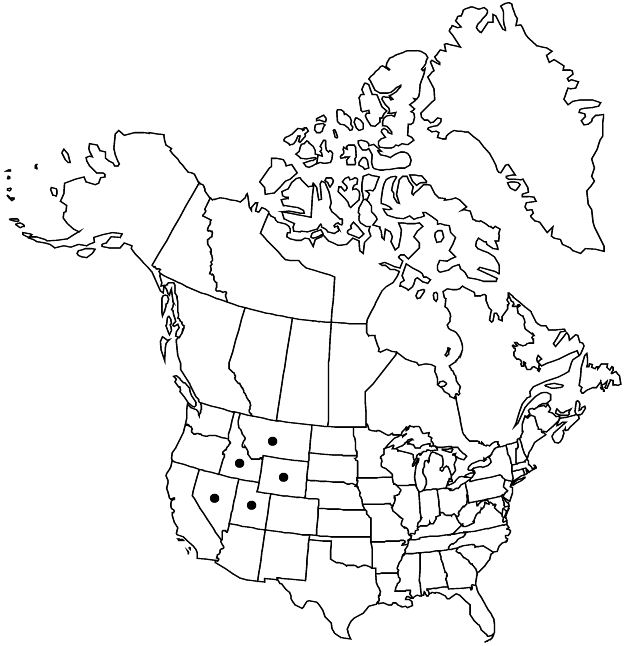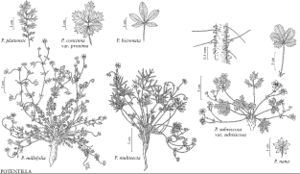Difference between revisions of "Potentilla multisecta"
Bull. Torrey Bot. Club 23: 397. 1896.
FNA>Volume Importer |
imported>Volume Importer |
||
| Line 60: | Line 60: | ||
|publication year=1896 | |publication year=1896 | ||
|special status=Endemic;Illustrated | |special status=Endemic;Illustrated | ||
| − | |source xml=https:// | + | |source xml=https://bibilujan@bitbucket.org/aafc-mbb/fna-data-curation.git/src/bb6b7e3a7de7d3b7888a1ad48c7fd8f5c722d8d6/coarse_grained_fna_xml/V9/V9_266.xml |
|subfamily=Rosaceae subfam. Rosoideae | |subfamily=Rosaceae subfam. Rosoideae | ||
|tribe=Rosaceae tribe Potentilleae | |tribe=Rosaceae tribe Potentilleae | ||
Revision as of 00:27, 28 May 2020
Stems 0.5–2(–2.7) dm, lengths 1–2(–3) times basal leaves. Basal leaves usually palmate, sometimes subpalmate, 3–12(–15) cm; petiole 1–6(–13) cm, straight hairs ± abundant, ± appressed, 1–1.5 mm, stiff, cottony hairs absent, glands absent or sparse; leaflets (3–)5, usually on tip, sometimes to distal 1/4 of leaf axis, ± overlapping, proximal pair separated from others by 0–10 mm of leaf axis, central leaflets ± obovate, 1–2.5(–4) × (0.5–)1–1.5(–2) cm, petiolule 0–2 mm, distal 1/2+ of margins incised 3/4+ to midvein, teeth 2–5 per side, separate, 3–10(–14) mm, surfaces similar, green to grayish, straight hairs sparse to abundant, appressed, 1–1.5 mm, usually stiff, short crisped hairs sometimes present, cottony hairs absent, glands absent or sparse. Inflorescences (1–)2–6(–10)-flowered. Pedicels 1–3(–4) cm. Flowers: epicalyx bractlets lanceolate-elliptic to narrowly ovate, 2–4 × 1–1.5 mm; hypanthium 3–5 mm diam.; sepals 3–5(–6) mm, apex ± acute; petals (2.5–)5–7 × (2–)4–5 mm; filaments 1–2 mm, anthers 0.6–1 mm; carpels 5–20, styles 2–3 mm. Achenes 2–2.5 mm, smooth.
Phenology: Flowering summer.
Habitat: Rocky slopes, dry meadows, in sagebrush scrub, pinyon-juniper woodlands, limber pine woodlands
Elevation: 2100–3500 m
Distribution

Idaho, Mont., Nev., Utah, Wyo.
Discussion
The center of distribution of Potentilla multisecta is northeastern Nevada and northwestern Utah; the best disposition of more northern populations, which tend to be hairier and more compact, is unresolved. Populations in eastern Idaho, southwestern Montana, and western Wyoming are components of an unresolved zone of apparent intergradation that also includes P. ovina var. ovina (sect. Multijugae), P. glaucophylla var. perdissecta (sect. Graciles), and members of sect. Subjugae. Significant variation also exists among populations in Nevada and Utah. Not included here are some subpalmate collections from Saskatchewan that would key to P. multisecta (for example, A. Breitung 4045, MO, RM), whose optimum disposition has yet to be resolved.
Selected References
None.
